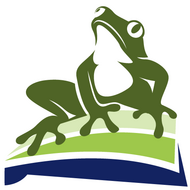
(View Complete Item Description)
This series of 5 high-quality, standards-aligned, inquiry-based activities and one STEM challenge have been field-tested by secong grade students and families of Wequiock Children's Center for Environmental Science during Safer At Home orders. These activities encourage students to use natural areas around their homes and in their neigbhorhoods as they improve their science and engineering skils relating to plant and animals interdependence. Created as a part of a WISELearn OER Innovation project, Connect, Explore, and Engage: Using the Environment as the Context for Science Learning was a collaboration of the Wequiock Children's Center for Environmental Science and the Wisconsin Green Schools Network. One of the goals of the project was to create standards-aligned lessons that utilize the outdoor spaces of the school (as well as those of the students' homes). These lessons were created to take place during the spring. However, some of the lessons could be conducted during the fall. Cut flowers from a florist may be used in place of ones found living outdoors.The title image was used with permission and is courtesy of Joe Riederer. The observation protocol "I Notice, I Wonder, It Reminds Me Of, I Think Maybe" has been adapted from that of the BEETLES Project.
Material Type:
Unit of Study
Authors:
Sandy Benton,
Jennifer Beno




















